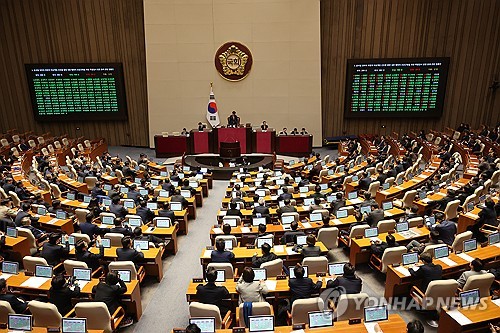(News Focus) N. Korea's newly unveiled hypersonic missile feared to be hard-to-intercept 'game changer'
By Choi Soo-hyang
SEOUL, Sept. 29 (Yonhap) -- North Korea's first hypersonic missile unveiled this week could ultimately prove to be a "game changer," experts warned Wednesday, as such missiles traveling at a speed of at least Mach 5 -- five times the speed of sound -- are hard to intercept with existing missile defense shields.
Though the North's missile is still in its early stage of development and is believed to fall far short of its U.S., Chinese or Russian counterparts, experts said the beginning of such development itself is worrisome enough.
Earlier Wednesday, the North's official Korean Central News Agency (KCNA) said the country's Academy of Defense Science conducted the first test-fire of a hypersonic missile Hwasong-8 from Toyang-ri, Jagang Province a day earlier.
The KCNA did not disclose other details, such as the flight range or speed of the projectile.
Hypersonic missiles usually fly at a speed of at least Mach 5, or 6,125 km per hour, and are capable of striking targets from longer ranges within a shorter period of time, giving little time for enemies to respond.
Shooting down missiles hurtling toward targets at such massive speeds is beyond the capabilities of the existing missile defense systems, and that's why hypersonic missiles are often called a "game changer," experts say.
While it's unclear how far the North has come in the development of the new missile, the KCNA said the test-launch confirmed "the guiding maneuverability and the gliding flight characteristics of the detached hypersonic gliding warhead."
A hypersonic glide vehicle is launched aboard a missile before it separates and approaches the target. They can change trajectory during flight, making it harder for enemies to intercept.
Yet, the Joint Chiefs of Staff said the newly unveiled missile would require "considerable time for actual deployment," adding South Korea and the U.S. are capable of intercepting it at the current stage.
The North's missile reportedly flew at a speed of around Mach 3.
"As it was the first test-launch, the missile's flight range, altitude, speed and other features would be incomplete, but the North Koreans would have accomplished their intended goal if they were able to obtain data necessary to move on to the next stage in the development process," professor Kim Dong-yup of Kyungnam University's Far East Institute said.

People watch a TV report at Seoul Station on Sept. 29, 2021, on North Korea's test-firing of a new hypersonic missile the previous day. (Yonhap)
Also drawing attention is the use of a missile fuel ampoule, which appears to be referring to a container of liquid fuel to reduce the preparation time for a missile launch, almost as fast as a solid-fuel missile.
During the latest weapon test, the stability of "the engine as well as of missile fuel ampoule that has been introduced for the first time" was "ascertained," KCNA said.
Compared with conventional missiles that require hours of liquid fuel injection before firing, the ampoule would allow the fuel to be stored for months before immediate use, according to experts.
"In terms of military threats, the fuel ampoule technology is assessed as a bigger threat than the detachable hypersonic gliding warhead," missile expert Ryu Sung-yeop from the Korea Research Institute of Military Affairs said, warning such technology would allow the North to fire its traditional missiles at any time.
Tuesday's missile launch came less than 10 months after North Korean leader Kim Jong-un unveiled the task to develop a "hypersonic gliding flight warhead in a short period" during a party congress in January.
Officials said the North is expected to conduct additional test-launches to stabilize the missile's capabilities and extend its flight range.
"It looks like a medium- to long-range missile similar to Hwasong-12 in design," Shin Jong-woo, a senior analyst at the Korea Defense Security Forum in Seoul, said.
The latest missile is known to have flown less than 200 kilometers, though the South Korean military has yet to confirm.
The KCNA did not mention whether it was ballistic, but experts said it is likely to be a ballistic missile given its name, Hwasong, which has been used for the country's other ballistic missiles using liquid fuel.
scaaet@yna.co.kr
(END)
-
 'Squid Game' director teases deep dive into despair in final season
'Squid Game' director teases deep dive into despair in final season -
 S. Korea condemns New Orleans crowd attack, offers condolences to victims
S. Korea condemns New Orleans crowd attack, offers condolences to victims -
 Presidential security chief booked for insurrection charges in martial law probe
Presidential security chief booked for insurrection charges in martial law probe -
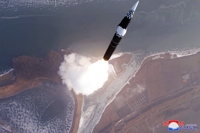 (3rd LD) N. Korea claims successful test of new intermediate-range hypersonic missile
(3rd LD) N. Korea claims successful test of new intermediate-range hypersonic missile -
 (URGENT) Investigators attempting to detain Yoon blocked by military unit inside presidential residence compound
(URGENT) Investigators attempting to detain Yoon blocked by military unit inside presidential residence compound
-
 'Squid Game' director teases deep dive into despair in final season
'Squid Game' director teases deep dive into despair in final season -
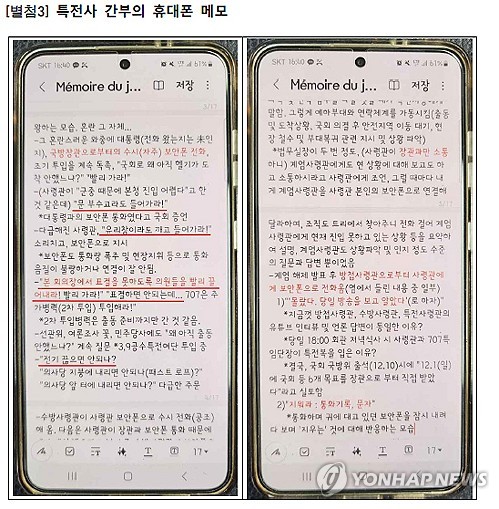 Released audio file shows Yoon ordered commanders to drag out lawmakers from Nat'l Assembly
Released audio file shows Yoon ordered commanders to drag out lawmakers from Nat'l Assembly -
 Acting defense minister meets U.S. ambassador, reaffirms alliance
Acting defense minister meets U.S. ambassador, reaffirms alliance -
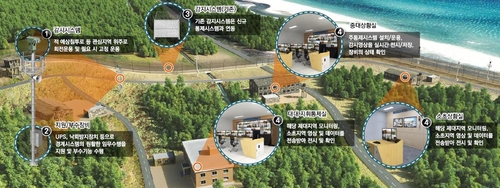 Military deploys AI-powered surveillance system at border unit
Military deploys AI-powered surveillance system at border unit -
 (7th LD) Investigators halt execution of warrant to detain Yoon after standoff at presidential residence
(7th LD) Investigators halt execution of warrant to detain Yoon after standoff at presidential residence
-
 (LEAD) Court grants extension of warrant to detain Yoon
(LEAD) Court grants extension of warrant to detain Yoon -
 Main opposition to file complaint against acting President Choi
Main opposition to file complaint against acting President Choi -
 CIO chief apologizes for failing to detain Yoon, vows to succeed at 2nd attempt
CIO chief apologizes for failing to detain Yoon, vows to succeed at 2nd attempt -
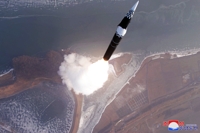 N. Korea's claim of hypersonic missile launch likely 'deception': S. Korean military
N. Korea's claim of hypersonic missile launch likely 'deception': S. Korean military -
 (3rd LD) N. Korea claims successful test of new intermediate-range hypersonic missile
(3rd LD) N. Korea claims successful test of new intermediate-range hypersonic missile





